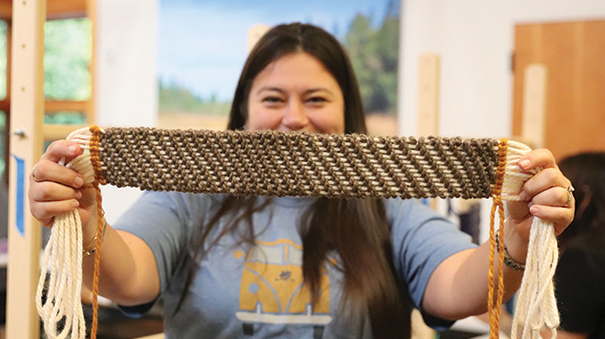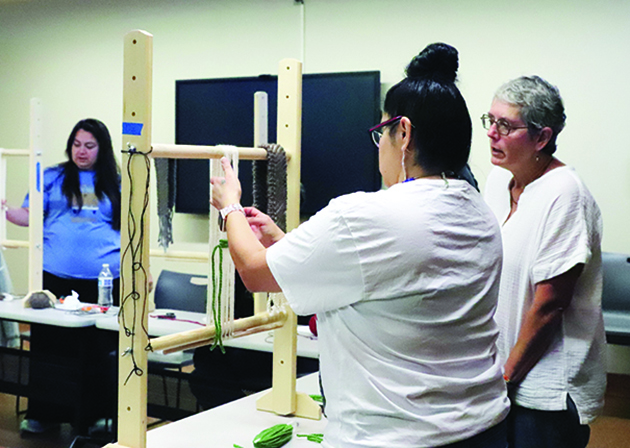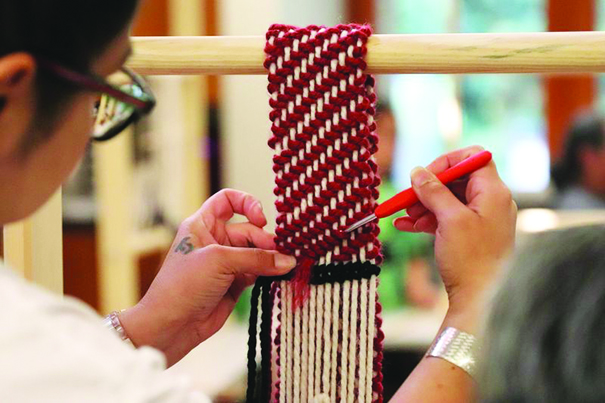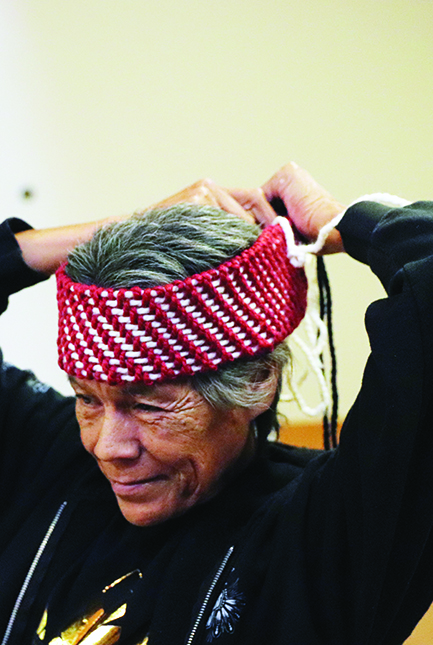
By Wade Sheldon, Tulalip Tribes
On Saturday, September 7, Tulalip artist Tillie Jones led a headband-weaving class at the Hibulb Museum, kicking off the Season of Healing. The class attracted seven participants who came together to weave wool headbands, share laughter, and connect through the art of weaving.
Tillie Jones, along with tribal members Michelle Myles and her son Syrille Jones, guided the students through the process. Participants could use a loom, select their wool colors, and begin weaving. As the intricate process unfolded, the room grew focused, with everyone giving their full attention to the detailed work ahead.

Tillie offered some wisdom during the class, emphasizing the deeper connection between the weaver and their creation. “What you put into your weaving becomes a part of it,” she explained. Weaving with intention, whether strength, love, or positive energy, allows those qualities to be embedded in the piece, making the final product more meaningful.
Tillie also shared practical advice, linking the skill of weaving to mathematics. “If you’re good at math, it helps,” she remarked, gesturing toward her son Syrille. “That’s why he’s so good at weaving.” She explained that a strong understanding of math helps weavers plan their patterns and maintain the structure and balance of the weave, ensuring the design comes together as intended.

Syrille also helped instruct the class and expressed his appreciation for the experience. “Weaving is a good stress relief to get your mind off everything around you,” he shared. Reflecting on the creative aspects of the craft, he added, “I like the different patterns people make, learning from the elders, and getting to experiment and make your patterns. It was good teaching, and I heard people laugh and enjoy their time.”
For many, the class was more than just a lesson in weaving; it was an opportunity to reconnect with tradition and find personal healing. Tulalip tribal member Wilma Gloria spoke about the therapeutic aspect of the practice, saying, “It is about keeping your hands busy and learning something new and traditional. I enjoyed the day; I had my ancestors with me, and they gave me strength.”

When asked about the significance of the headband, Wilma explained, “Traditionally, the headband was used to represent the tribe you were from.”
The event provided a creative outlet and offered participants a moment to bond with their heritage and each other. Through the craft of weaving, both tradition and healing were honored in a meaningful way.
The headband-weaving class is just the beginning of a series of workshops promoting healing through traditional crafts. Other weaving courses are being held every Saturday through September, offering participants the chance to learn various skills, connect with their culture, and continue the journey of personal and collective healing.